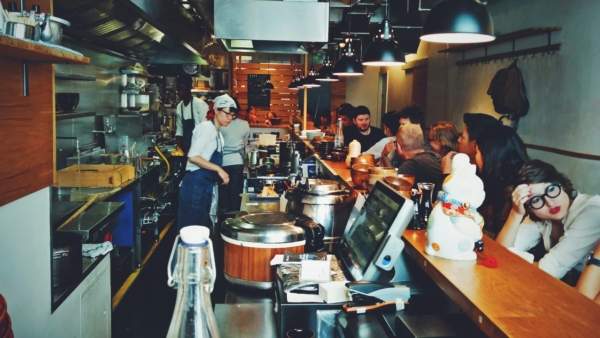How to Write Online Menu Descriptions (with Examples)

When you’re updating your online menu or online ordering system, it’s tempting to just copy over the dish names from your restaurant menu and call it a day.
But a little extra effort can make a big difference.
Well-written menu descriptions don’t just tell guests what’s in a dish; they entice customers, set the tone for your brand, and can increase sales.
Fortunately, you don’t need to be a professional writer to pull this off.
With a few simple techniques, you can write menu descriptions that sounds natural, highlight your best dishes, and help guests feel confident (and excited) about ordering.
In this article, you will learn:
- How to balance clarity, creativity, and brand voice in your menu writing
- How to use sensory language to create truly mouth-watering menu descriptions
- How to structure descriptions that drive orders on your restaurant website
So what exactly separates an okay description from one that gets guests to order immediately?
What Makes a Great Menu Description
Writing a great menu description isn’t about stuffing every detail onto the page. It’s about striking the right balance between clarity, a little bit of creativity, and your brand’s voice.
The best restaurant menu descriptions help customers understand what the dish is and why they’ll love it.
Think of each description as a mini sales pitch. You’re giving just enough information to spark interest without overwhelming or confusing them.
In fact, shorter, more intentional menu writing often performs better than long, overly detailed descriptions.
Especially when guests are browsing your online ordering menu, attention spans are short, and you’ve got just a few seconds to grab their attention.
Balance clarity, creativity, and brand voice
You want your menu writing to sound like you, not a textbook or a food critic. If your restaurant is fun and quirky, your descriptions should be too.
If it’s more refined and classic, keep the tone polished. Either way, creativity and clarity should work together, not fight each other.
Helps guests quickly understand the dish and why they’ll love it
People don’t want a lecture—they want to know quickly whether that grilled chicken sandwich has a smoky chipotle kick or if it’s a mild, kid-friendly option.
Your words should give them a vivid mental snapshot, not leave them guessing.
Keeps it intentional, even if it’s short
A great brief description can do more heavy lifting than a long, rambling one. Every word should either describe food, set the vibe, or entice the guest.
If a word or phrase doesn’t do one of those things, cut it.
Effective menu descriptions don’t just describe food—they entice customers by creating a mental picture of what’s coming to the table (or takeout bag).
Done right, they’ll make guests more likely to hit “Order Now” without hesitation.
Highlight Ingredients and Flavors That Matter
When you’re writing menu descriptions, not every ingredient deserves a shoutout. The key is to highlight what makes the dish stand out: the flavors, textures, or locally sourced ingredients that guests will be interested in.
Be specific about standout elements
For example, Arroyo Chop House shares with customers that they serve only the highest grade of domestic wagyu beef. An incredibly important detail that is guaranteed to sell them significantly more steaks than if they left that off the menu description.
Zero in on the key ingredients that add real value and appeal.
Is your pasta handmade daily?
Is your burger piled high with house-cured bacon?
Is your honey drizzled from a nearby farm?
Guests don’t just want to know what’s in a dish; they want to know what makes it a must-try.
Don’t list every component
But be careful: you don’t need to list every single component.
Listing out minor ingredients or every spice in a marinade will clutter up your menu and cause you to lose your customers’ attention.
Focus on the elements that spark curiosity or tempt customers to imagine that first bite. Your job is to create a vivid picture, not a grocery list.
Mention sourcing or preparation if it adds value
If you use locally sourced produce, specialty imports, or unique preparation methods, mention them, but only if they genuinely add value.
For example, BBQ+RICE does an excellent job describing their preparation methods for a Bulgogi beef rice bowl, giving customers a clear sense of what to expect.
Highlighting local flavors communicates quality and makes menu items feel more special, especially on an online menu where you’re competing for fast decisions.
Specificity sells. The more vividly and concisely you can describe your food, the more likely customers are to choose your dish over the competition.
Use Sensory Language Without Going Overboard
Great menu descriptions help guests imagine what it’s like to take that first bite. To make the visualization even more impactful, use sensory words.
A well-placed “crispy,” “buttery,” or “smoky” can paint a more vivid picture than a long list of ingredients ever could.
But there’s a line between vivid and over-the-top. You don’t need to turn your menu writing into a food blog.
Avoid tired and overused fillers like:
- Mouthwatering
- Delicious
- Tasty
These words tell your customers how to feel without giving them anything specific. Instead, use words that hint at textures, cooking methods, or flavor notes.
Here’s a couple examples to see the difference:
- “Charred corn with lime crema and crumbled cotjia” gives the readers a sense of texture, contrast, and brightness from the lime.
- “A delicious mix of corn and cheese” is generic and forgettable; there’s nothing to hook the customer’s attention.
When you write a menu, aim to sound like a real person describing something they love, not like a cooking show narrator or a scripted ad.
A few thoughtful descriptive words can help guests picture the experience and feel more confident about what they’re ordering.
Keep It Short, Skimmable, and Structured
Guests don’t read your entire menu like they’re reading a novel—especially online; they’re scanning for something that looks good, and they’re trying to find it as quickly as possible.
That’s why structure matters just as much as content.
Aim for 1-2 concise sentences per item
The sweet spot is usually one or two well-written sentences. You don’t need to explain every detail—just enough to highlight what makes the dish a must-try menu item and worth ordering.
For example, Muma Kitchen uses two punchy sentences to describe their Kofte dish. Notice the use of sensory words to bring it to life.
Shorter menu item descriptions are more likely to be read, especially on mobile screens.
Make it easy to scan on mobile
The vast majority of guests will be reading your restaurant menu on their phones, especially when browsing your online ordering menu.
That means formatting matters. Avoid walls of text and use line breaks, spacing, or even icons to help key details pop.
Front-load the good stuff
Lead your description with the star ingredient, signature flavor, or prep technique. You want customers to get an idea of what the menu item is quickly.
For example, Maple Block BBQ tells customers right away that their tri-tip is “wood-smoked then finished over coals; carved to order.”
Most people probably haven’t had tri-tip prepared this way, so it’s an immediate attention grabber that helps sell the dish.
Structure improves the entire menu experience
Well-structured descriptions don’t just improve readability—they improve the guest experience and reduce customer dissatisfaction from misunderstandings or mismatched expectations.
When every item is clear, skimmable, and consistent, guests are more likely to explore, try something new, and add more to their cart, especially on a restaurant website built for conversion.
Be Clear About Dietary Details
Nothing tanks the guest experience faster than realizing they ordered something they can’t eat. Your menu descriptions don’t need to go deep into the weeds on ingredients, but they do need to build trust.
Whether someone’s avoiding gluten, allergic to nuts, or choosing plant-based options, clear descriptions help them make informed choices and avoid potential issues.
Use clear labels, not long explanations
Clearly label dietary restrictions like gluten-free, vegan, vegetarian, or nut-containing, and skip the long side notes and go with shorthand. A simple “gluten free” or “V” icon does the job without cluttering up your menu description.
For example, Emporium Thai does an excellent job of sharing dietary information so guests don’t fall in love with a dish before discovering it’s a dietary restriction.
These labels create clarity, helping guests make informed choices without second-guessing or abandoning their cart.
Don’t let dietary details dominate the menu description
Dietary callouts are important, but they shouldn’t distract from what actually makes the dish appealing.
Whether you place the label at the start or end, the key is to make sure the flavor and experience of the dish still shine through.
Build trust by being transparent
When your restaurant menu descriptions are upfront and transparent about the preparation methods and ingredients, it shows guests that you’ve thought about their needs and that you care.
That trust goes a long way, especially with first-time diners ordering through your restaurant website.
Common Mistakes to Avoid
Even if your intention is in the right place, it’s easy to fall into some classic menu-writing traps.
These missteps can confuse guests, weaken your restaurant brand, and hurt your restaurant sales if they make people second-guess before ordering.
Here’s what to watch out for:
Being too vague or generic
“Chicken sandwich” isn’t a description—it’s a category that tells us nothing.
Is it crispy?
Grilled?
Spicy?
Served on a brioche bun with house-made aioli?
A good menu description helps guests picture what they’re getting and why they’ll want it. Vague, generic labels leave them guessing.
Being too complex or technical
Using niche culinary terms might sound impressive, but if your guests are having to Google words in your menu descriptions, you’ve lost them—leave out the fancy menu descriptions.
Save the “sous vide confit en croûte” for menu where that level of details fits. If you’re running a casual spot or pushing takeout through your online ordering system, plain language wins every time.
Overpromising or using inconsistent tone
Don’t describe things as “the best you’ve ever had” unless you’re ready to back that up. Overhyping menu items or switching between playful and formal language can throw off the whole vibe of the menu.
Your tone should match your concept and be consistent across your entire menu.
Using insider references or regional slang
That clever nickname for a dish might get a laugh from your regulars, but it can alienate new guests. If it’s not self-explanatory, consider rewriting.
Clear, confident menu descriptions help everyone feel welcome and informed.
Turn Your Menu Into a Sales Tool With Effective Descriptions
The right words can make your online menu just a persuasive as your best server. By writing thoughtful, sensory-rich, and structured menu descriptions, you’ll increase sales with every customer visit.
Contact ChowNow to set up a your own Restaurant Website and Online Ordering System that boosts sales and build customer loyalty.






